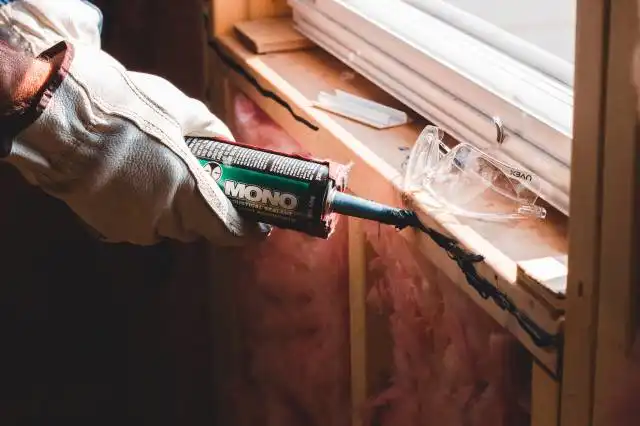Start a Print Shop
Become the Maestro of Tangible Impressiveness: Start Your Print Shop Journey
| Updated


PRINT SHOP
In a world where digital consumes almost every corner of our life, you're thinking of standing out by stepping back in time with a Print Shop. Bravo! A print shop is a business that offers printing services, ranging from business cards and stationery to posters and banners. Imagine the expression on your customer's face when they hold a high-quality flyer, feeling its texture and seeing the vibrant colors; something an email advertisement can never provide. As a print shop owner, you are the master of physical impression, serving local businesses, charities, and even personal needs by providing tangible promotion and communication materials.
Jump to Business Plan
RELATED BUSINESS IDEAS
Browse ALL Retail & Shopping Business Ideas
Discover Your Perfect Domain
Unlock the door to your online success with our hand-picked selection of premium domain names. Whether you're starting a new venture or rebranding an existing one, the right domain can set the tone for your digital presence. Browse through our curated list, each with its unique potential to enhance your brand's visibility and credibility.
PRINT SHOP MINI BUSINESS PLAN
This a quick reality check to help you identify the strengths and weaknesses of your business concept before you dive in.
Expected Percent Margins:
- Gross Margin: Typically around 30%
- Net Profit Margin: Normally between 10-15%
Earnings Expectations:
- Daily Earnings: Approximately $300 - $700
- Weekly Earnings: Roughly $2,100 - $4,900
- Monthly Earnings: Around $9,000 - $21,000
- Annual Earnings: Generally $108,000 - $252,000
Actions to Hit These Numbers:
Start-Up Costs:
- Initial Investment: Typically plan for $20,000-$50,000 for lease deposit, machinery, supplies, branding and advertising.
Partnerships and Client Acquisitions:
- B2B Services: Establish partnerships with local businesses to meet their printing needs.
- Local Communities and Schools: Offer discounts for local schools, events, and community organizations.
Employee and Training:
- Staffing: Hiring 1-2 experienced full-time staff members will provide a good foundation.
- Training: Investing in employee training can ensure you maintain a high standard of quality, which can help attract and retain customers.
Pricing:
- Price Competitively: Offering competitive pricing can help you attract customers, but make sure you're still able to cover costs and make a profit.
Minimize Overspending:
- Negotiate with Suppliers: By negotiating deals on supplies and equipment, you can reduce your overhead costs.
- Limit Waste: Plan your print jobs carefully to minimize waste from misprints.
Please note that these figures are rough estimations and can greatly vary based on market conditions, location, and individual characteristics of your business. Always consult with a financial advisor before making major business decisions.
NOT WHAT YOU HAD IN MIND? Here are more ideas



Browse ALL Retail & Shopping Business Ideas
Grab Your Business Website Name
Before you get caught up in the whirlwind of setting up your business, invest in a domain name. It's a small but significant step that lays the foundation for your brand and makes it easier for customers to find and trust you. Just like you wouldn't build a house without securing the land first, don't build a business without securing your domain name.
"Why? Can't that wait?" Here's why it shouldn't
Step 1: Determine if Starting a Print Shop is Right for You
Analyze Startup Expenses
Before starting a print shop, it is important to analyze the startup expenses. This should include the cost of the equipment needed, such as a printer, computer, and software. It should also include the cost of supplies, such as paper, ink, and other materials. Additionally, the cost of any necessary licenses or permits should be taken into account. Finally, the cost of any marketing materials or advertising should be considered.
Analyze Ongoing Expenses
In addition to startup expenses, it is important to analyze the ongoing expenses of running a print shop. This should include the cost of supplies, such as paper, ink, and other materials. It should also include the cost of any necessary licenses or permits. Additionally, the cost of any marketing materials or advertising should be taken into account. Finally, the cost of any labor, such as employees or contractors, should be considered.
Examples of Ways to Make Money
There are several ways to make money with a print shop. One way is to offer printing services, such as business cards, flyers, and brochures. Another way is to offer design services, such as logo design and website design. Additionally, the print shop can offer other services, such as copywriting, graphic design, and web development. Finally, the print shop can also offer custom printing services, such as t-shirts, mugs, and other items.
Step 2: Name the Business
Naming a business is an important step in the process of starting a print shop. It is important to choose a name that is memorable and reflects the type of business that is being started. Additionally, it is important to make sure that the name is not already taken by another business. To ensure that the name is available, it is important to check with the local government to make sure that the name is not already taken. Additionally, it is important to make sure that the name is not trademarked or copyrighted by another business.
When choosing a name, it is important to consider the type of business that is being started. For example, if the print shop specializes in wedding invitations, it may be beneficial to include the word “wedding” in the name. Additionally, it is important to make sure that the name is easy to pronounce and spell. This will make it easier for customers to remember the name and find the business online.
Once a name has been chosen, it is important to secure the domain name for the website. Additionally, it is important to register the business name with the local government. This will ensure that the business is legally registered and that the name is not taken by another business.
Finally, it is important to create a logo for the business. The logo should reflect the type of business that is being started and should be memorable. Additionally, it is important to make sure that the logo is not too complicated and that it can be used on business cards, websites, and other marketing materials.
Step 3: Secure Financing
When starting a print shop, it is important to secure financing to cover the startup and ongoing expenses. There are a variety of sources to consider when looking for financing. For example, you may be able to secure a loan from a bank or other financial institution. You may also be able to get a loan from family or friends. Additionally, you may be able to get a loan from the Small Business Administration or other government agencies. Additionally, you may be able to get a loan from venture capitalists or angel investors.
Calculate the Amount Needed
Before you can secure financing, it is important to calculate the amount of money you need to start and run your print shop. This includes the cost of the equipment, supplies, and other materials needed to run the business. It also includes the cost of rent, utilities, and other overhead expenses. Additionally, you should factor in the cost of marketing and advertising to help you attract customers. Once you have calculated the amount of money you need, you can begin to look for sources of financing.
Create a Business Plan
When looking for financing, it is important to create a business plan. This plan should include a detailed breakdown of the startup and ongoing expenses. It should also include a detailed description of the services you plan to offer and how you plan to make money. Additionally, it should include a breakdown of the market and a financial projection of the business. This plan will help you secure financing and will also help you stay organized and on track as you start and run your business.
Step 4: Find a Location
When selecting a location for a print shop, there are several factors to consider. First, the location should be easily accessible for customers. Second, the space should be large enough to accommodate the necessary equipment. Third, the rent should be affordable and within the budget. Fourth, the location should have the necessary utilities, such as electricity and water, to run the business. Finally, the location should be in a safe and secure area.
Leasing or Buying a Location
When looking for a location, there are two options: leasing or buying. Leasing is often the more cost-effective option, as it requires less upfront capital. However, it may be difficult to find a long-term lease that meets the needs of the business. Buying a location is more expensive, but it provides the business with more control and stability in the long run.
Securing the Location
Once a suitable location has been found, the next step is to secure the lease or purchase agreement. This involves negotiating the terms of the agreement and signing the necessary documents. It is important to read the agreement carefully and make sure that all of the terms are satisfactory before signing. Additionally, it is important to make sure that all necessary permits and licenses are obtained before opening the business.
Step 5: Obtain Licenses and Permits
In order to start a print shop, you must obtain the necessary licenses and permits. Depending on the type of business you are running and the state you are in, the licenses and permits you need may vary. Generally, you will need a business license, a seller’s permit, and a zoning permit. You may also need a special permit if you are selling a product that requires it. Additionally, you may need to register with the IRS, obtain a tax ID number, and register with the state’s department of revenue.
Research Local Laws
It is important to research the local laws and regulations in your area to ensure that you are in compliance with all applicable laws. This includes researching the zoning laws, health and safety regulations, and any other laws that may apply to your business. Additionally, you may need to obtain a fire safety inspection and obtain a certificate of occupancy from the local fire department.
Insurance
You will also need to obtain insurance for your business. This includes general liability insurance, property insurance, and workers’ compensation insurance. Additionally, you may need to obtain product liability insurance if you are selling a product. Make sure to research the different types of insurance available and find the best coverage for your business.
Professional Assistance
It is important to seek professional assistance when obtaining the necessary licenses and permits. An attorney or accountant can help you navigate the process and ensure that you are in compliance with all applicable laws. Additionally, they can help you determine the best type of insurance for your business.
Step 6: Purchase Equipment
When starting a print shop, there are several pieces of equipment that are necessary for success. These include a printer, a scanner, a computer, a cutting machine, and a binding machine. It is important to research the types of equipment that are available and determine which ones will best suit the needs of the business. Additionally, it is important to consider the cost of the equipment and determine if it is within the budget of the business.
Where to Purchase Equipment
Once the types of equipment needed have been determined, it is important to research where to purchase them. It is often beneficial to purchase the equipment from a local store, as this can provide the opportunity to ask questions and get advice from experienced professionals. Additionally, online stores can be a great source for purchasing equipment, as they often have competitive prices and a wide selection of products.
Maintenance and Upkeep
When purchasing equipment for a print shop, it is important to consider the maintenance and upkeep of the equipment. It is important to research the warranty and maintenance policies of the equipment and determine if it is within the budget of the business to keep the equipment in good condition. Additionally, it is important to research the availability of replacement parts and supplies for the equipment, as this can help to ensure that the business is able to continue to operate without interruption.
Step 7: Market the Business
Once the business is up and running, it is important to market the business in order to attract customers. Examples of ways to market the business include creating a website, utilizing social media, and advertising in local newspapers and magazines. Additionally, it is important to create a logo and slogan to help customers remember the business. Additionally, creating business cards and flyers can help spread the word about the business.
Networking
Networking is an important part of marketing the business. This involves attending local events and networking with other businesses in the area. Additionally, joining local business organizations can help to spread the word about the business. Additionally, attending trade shows and conferences can help to get the business noticed. It is also important to create relationships with local vendors and suppliers in order to get the best deals on supplies and materials.
Promotions
Another way to market the business is to offer promotions. This could include offering discounts for customers who refer new customers or offering special discounts during certain times of the year. Additionally, offering free samples or discounts on certain products can also help to attract customers. Additionally, offering free shipping or other incentives can help to draw in customers.
Online Presence
Creating an online presence is also important for marketing the business. This includes creating a website and utilizing social media platforms such as Facebook, Twitter, and Instagram. Additionally, creating an online store can help to reach a wider audience. Additionally, utilizing search engine optimization can help to get the business noticed by potential customers. Additionally, creating content such as blogs and videos can help to engage customers and keep them coming back.
Step 8: Hire Employees
When hiring employees, it is important to consider their experience, skills, and personality. Make sure to check references and conduct background checks. It is also important to have a clear job description and set expectations. Additionally, consider offering competitive salaries and benefits to attract the best candidates.
Training Employees
Once you have hired employees, it is important to provide them with the necessary training. This should include training on the equipment and processes used in your print shop. It should also include training on customer service and safety protocols. Additionally, provide your employees with the necessary resources and tools to do their job effectively.
Establishing Policies
Establishing policies and procedures is essential for running a successful business. This should include policies on customer service, safety, and quality control. Additionally, consider establishing policies on employee performance and attendance. Make sure to communicate these policies to your employees and ensure that they are followed.
Creating a Positive Work Environment
Creating a positive work environment is essential for employee morale and productivity. This should include providing a safe and comfortable workspace, as well as providing employees with the necessary resources and tools to do their job. Additionally, consider offering incentives and rewards to motivate your employees.
Step 9: Open the Business
Opening the business is the final step in starting a print shop. Before opening the business, it is important to make sure that the necessary permits and licenses are obtained. It is also important to make sure that the business is properly insured. Additionally, it is important to have a plan for marketing the business to potential customers. Finally, it is important to have a plan for managing the day-to-day operations of the business.
Advertising the Business
Once the business is open, it is important to advertise the business to potential customers. This can be done through a variety of methods, including print ads, radio ads, television ads, and online ads. Additionally, it is important to create a website for the business and to use social media to promote the business. It is also important to create a presence at local events, such as trade shows and conventions, to promote the business. Finally, it is important to create a referral program to encourage customers to spread the word about the business.
EXPLORE MORE CATEGORIES
Browse ALL Business Idea Categories
TAKE THE NEXT STEPS










